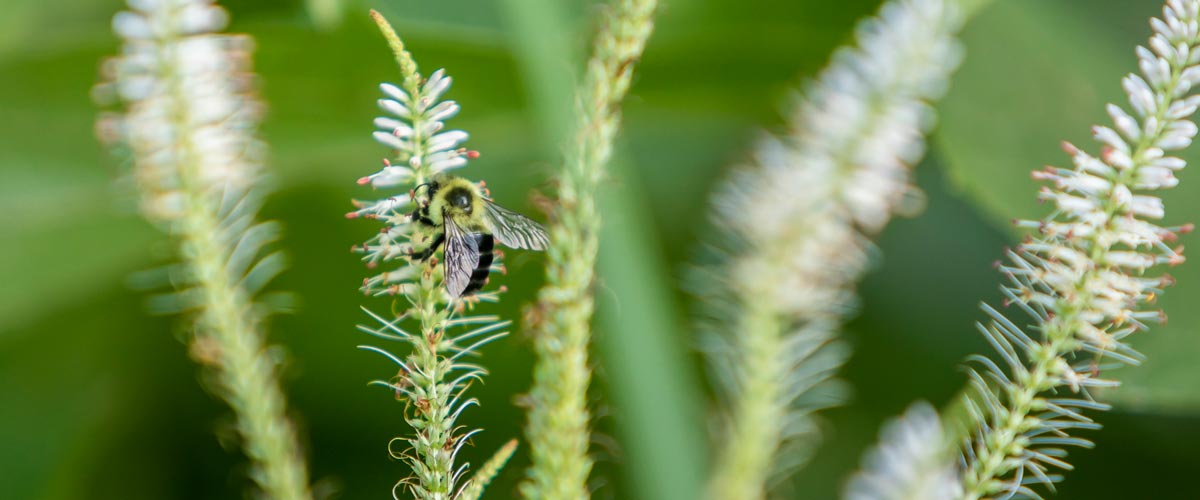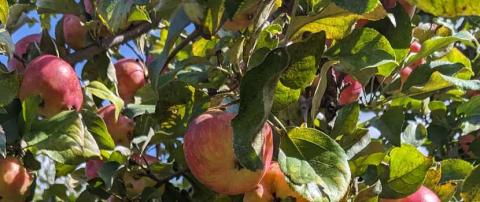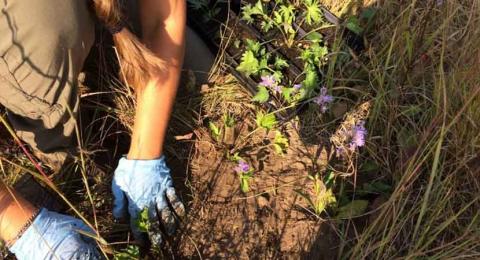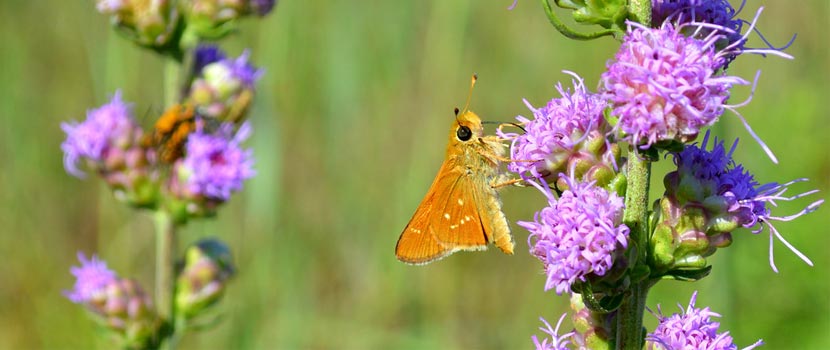
2024: Three Rivers Parks’ Big Year of Bugs
By: John Moriarty
February 06, 2024
Category: Big Year of Bugs
Throughout 2024, Three Rivers Park District is highlighting bugs. Many people have asked why we are interested in bugs because they think of them as creepy and gross. But that is exactly why we are interested. Because, while some bugs creep, they are all cool and important in their own way — even mosquitoes… but maybe not ticks. This year we’ll showcase the cool and interesting side of bugs with a yearlong series of activities including talks, classes, hikes and events.
When entomologists (scientists who study insects) talk about “bugs” they are referring to a specific group of insects in the order Hemiptera (sometimes referred to as true bugs). This includes box elder bugs, stink bugs, cicadas and aphids. When we talk about bugs during our Big Year of Bugs, we are referring to all invertebrates, including insects, spiders, arthropods, worms and snails.
The diversity of bugs is more than 10 times greater than all the birds, mammals, reptiles, amphibians and fish species in Minnesota combined — approximately 625 species of vertebrates. There are over 700 families of insects in the state, with some families having hundreds of species. A rough estimate for the diversity of bugs in Minnesota is 8,000 to 10,000 species. A recent listing of spiders for the state included more than 650 species and there are probably many more still to be found. The bugs within Three Rivers Parks range from the snow fleas (springtails), which are so tiny you need a magnifying glass to see, to cecropia moths that can have a 7-inch wingspan.

The Importance of Bugs
Bugs are a crucial part our world for many reasons.
They are the main food source for wildlife.
Studies have shown that, worldwide, birds eat 500 million tons of insects a year. That is trillions of individual insects. While no one has figured out how many get eaten specifically in Minnesota, it is a lot.
They pollinate native trees and wildflowers.
Without insect pollinators — including flies, beetles, bees and butterflies — there wouldn’t be any wild fruit trees, wildflowers or vines. The wild fruit and seeds of these plants are a crucial food source to many wildlife species.
They pollinate many of the plants that we eat.
Most of our vegetables and fruits are pollinated by insects. Without bugs, we wouldn’t have apples, oranges, grapes, squash, tomatoes, beans and many more fruits and vegetables to eat.

They clean up the landscape of dead plants and animals.
Insects and other bugs eat dead animals and the poop left by live animals. Without the decomposers, our landscape would be a big, stinky, gross mess.
They add to the diversity and beauty of natural and human-made habitats.
Insects and bugs come in a variety of beautiful colors and shapes. Butterflies and jewel beetles are regularly depicted in art. Many people plant butterfly gardens to attract a variety of butterflies, especially the large colorful ones.
How Three Rivers Manages Bug Habitat
Bugs are found in just about every habitat in the Three Rivers Park District, from prairies and forests to picnic areas and golf courses. We tend to manage the former to the benefit of the bugs and the latter to the benefit of the humans.
When managing natural habitats for bugs, we manage for a diversity of plants for food, nesting and hiding. This management may include prescribed burns, removing invasive plant species and planting additional species of plants. We also work to minimize or eliminate mowing and pesticide use. All of these practices help make the parks an inviting space for bugs to live.
Bringing Back Butterflies and Moths to Three Rivers
Most butterflies will naturally find their way to good habitat. Many of the species found in our parks, including monarchs, swallowtails, red admirals and others, started using our restored habitats as soon as nectar plants — which provide critical nutrients for butterflies — became established. Even some rare species, including the leadplant flower moth, discovered the prairies on their own.
Unfortunately, some species have poor dispersal abilities, or their larvae are highly specific to one or two species of wildflowers. In cases where bugs are particular about plants, we will introduce more of what they like, in hopes to encourage them to visit — and later live in — our parks.
As part of our regal fritillary restoration, we planted 10,000 prairie violet plants as prairie violets are the only plant that serves as a host for their caterpillars to feed on.

We are also working on a Karner blue butterfly project. Because their caterpillars only feed on wild lupine, we’re focusing the reintroduction at Crow-Hassan Park Reserve where there are extensive lupine areas.
What’s Happening This Year
No matter what your familiarity is with bugs, there are many opportunities throughout 2024 to learn more about them.
During the first quarter of the year, we have a speaker series on select Sundays at Silverwood Park, featuring different Minnesota entomology experts.
From April through September, we have planned exciting events throughout the Park District where you can celebrate bugs, including the Dragonfly Festival at Eastman Nature Center or the Summer Pollinator Fest at Gale Woods Farm.
During the last part of the year, we’re providing opportunities for you to unleashing your creative spirit with bug-focused, art programs.
Check out the full list of activities on our Big Year of Bugs webpage, and stay tuned throughout the year for other exciting opportunities to engage with bugs!
About the Author

John Moriarty is the Senior Manager of Wildlife at Three Rivers Park District and has been with the Park District for 15 years. He has been involved in many of the wildlife restoration efforts and initiated the snake and butterfly efforts. John has led several projects to increase prairie habitat in the Park District. John likes exploring natural areas and looking for all types of plants and animals, but especially turtles.
Related Blog Posts
Bringing Back Butterflies: What It Takes To Complete A Reintroduction
By: John Moriarty
From securing permits to making sure habitat is just right, a lot of work goes into bringing new butterflies into our parks. Learn all about the process of reintroducing butterflies, our past successes and which butterflies we hope to introduce into our parks in the future.
Why and How We Survey Bumblebees at Three Rivers
By: Angela Grill
Understanding how our bumblebee populations are changing and why helps us determine how we can best support them. Read on to learn all about how we conduct bumblebee surveys in our parks and what you can do to help collect valuable bumblebee data.
Regal Fritillary: A Rare Butterfly That Is Thriving in Three Rivers
By: John Moriarty
Regal fritillary butterflies have sharply declined in population and are listed as a species of special concern in Minnesota. Learn how and why they are thriving at Crow-Hassan Park Reserve.



